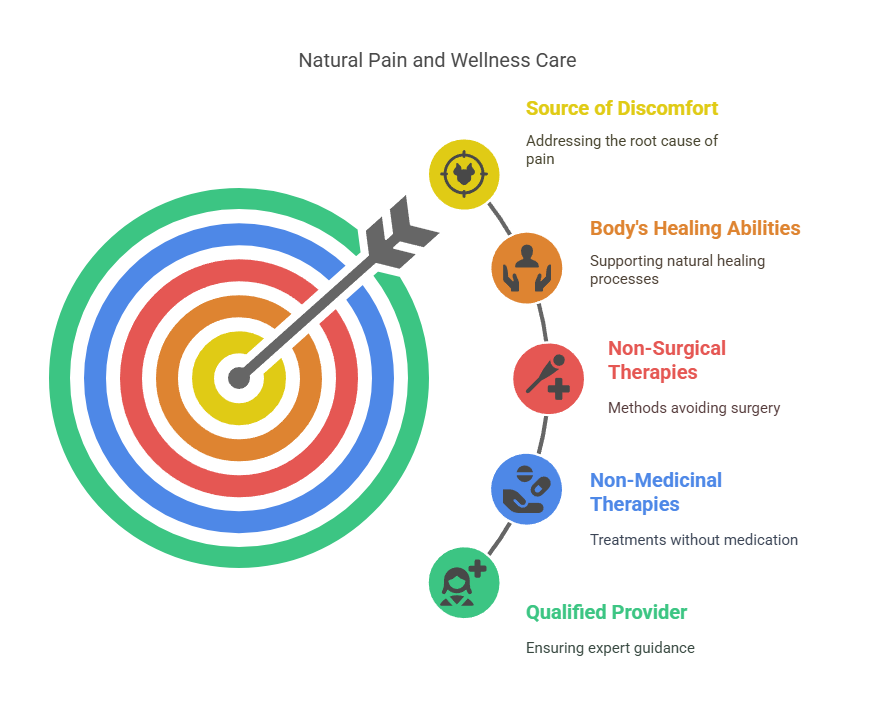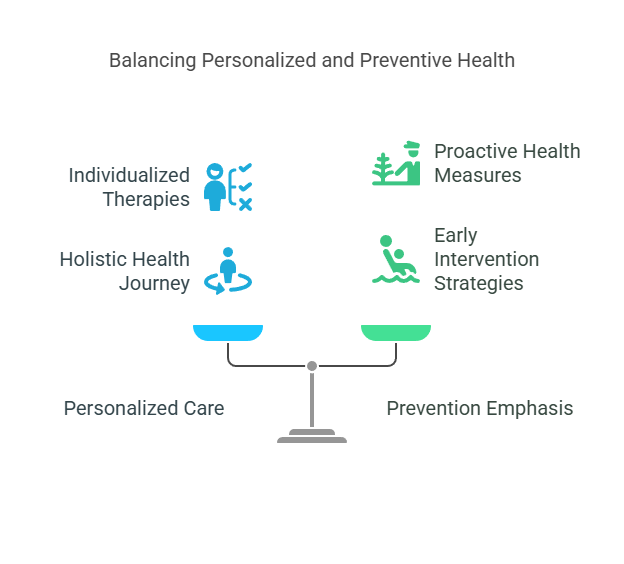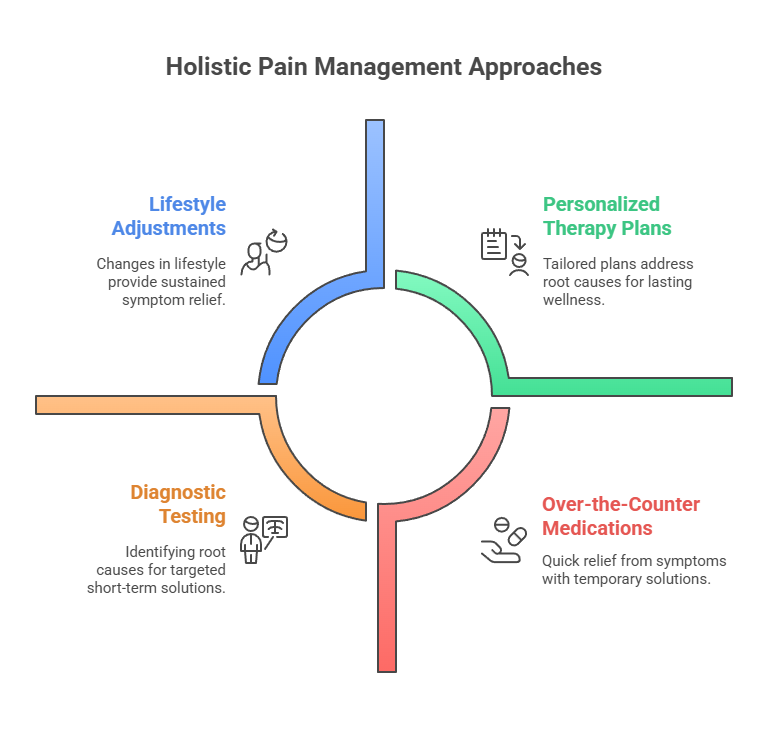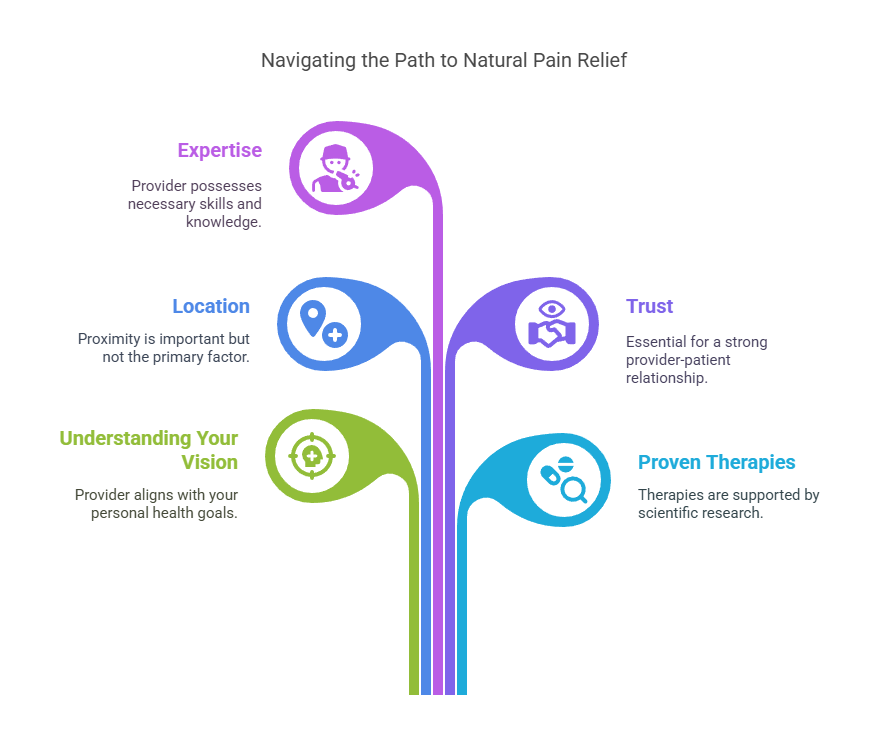Many people deal with ongoing pain and health issues. While traditional medicine has its place, a lot of folks are now looking into natural pain and wellness care. This approach focuses on helping your body heal itself, often without strong medications or surgery. It’s about finding the root cause of discomfort and using gentle methods to bring your body back into balance. This guide will help you understand what natural pain and wellness is all about, its benefits, and how you can find reliable care.

Key Takeaways
- Natural pain and wellness care aims to address the source of discomfort using methods that support the body’s own healing abilities.
- This type of care often involves a range of non-surgical and non-medicinal therapies.
- Finding a qualified provider is important when exploring natural pain and wellness options.
What Is Natural Pain and Wellness Care?
Rather than masking symptoms, natural wellness care helps activate your body’s own healing process. It’s about finding ways to manage pain and improve overall well-being using methods that are as gentle and non-invasive as possible. Think of it as working with your body, not against it.
The goal isn’t to cover up symptoms—it’s to find and treat the underlying cause of your pain or condition. This often involves lifestyle adjustments, nutritional support, and therapies that promote natural healing processes. It’s a pretty different approach than just popping a pill and hoping for the best.
Natural pain and wellness care is often considered alternative medicine. It’s important to remember that while natural approaches can be incredibly effective, they might not be the right choice for every situation. Always talk to a healthcare professional to figure out what’s best for you.
Natural pain and wellness care emphasizes personalized treatment plans. What works for one person might not work for another, so practitioners take the time to understand each individual’s unique needs and circumstances. The individualized approach plays a major role in achieving real results.
Here are some key aspects of natural pain and wellness care:
- Focus on the whole person: Holistic care designed to balance your physical, emotional, and mental well-being.
- Emphasis on prevention: Promoting healthy habits to prevent future problems.
- Use of natural therapies: Employing techniques like herbal medicine, acupuncture, and massage.
Benefits of Choosing Natural Pain and Wellness Solutions
Opting for natural pain and wellness solutions can bring a lot of good things to your life. It’s not just about getting rid of pain; it’s about improving your overall health in a way that works with your body, not against it. With rising concerns about side effects and long-term health, alternatives to traditional medicine are gaining traction. Let’s explore some of the key advantages.
One of the biggest draws is the reduced risk of side effects. Many conventional pain medications come with a long list of potential problems, from stomach upset to more serious complications. Natural approaches, on the other hand, tend to be gentler and better tolerated by most people. Before trying something new, check in with your provider to make sure it’s right for you, but the potential for fewer side effects is a definite plus.
One major advantage is its aim to resolve the root issue—not just cover up the symptoms. For example, if you have chronic back pain, a natural pain and wellness approach might involve things like physical therapy, acupuncture, personalized changes in daily habits to help resolve the source of discomfort. This can lead to longer-lasting relief and improved quality of life. For those looking for a holistic path to healing, natural pain relief therapies offer a powerful alternative.

Here’s a quick rundown of some other advantages:
- Personalized care: Natural care focuses on you as a whole, offering customized therapies designed for your personal health journey.
- Emphasis on prevention: Many natural therapies focus on preventing problems before they start, through things like diet, exercise, and stress management.
- Integration with conventional medicine: Natural approaches can often be used alongside conventional treatments to provide a more comprehensive and effective plan.
It’s important to remember that natural pain and wellness solutions aren’t a magic bullet. They require commitment and may not work for everyone. However, for many people, they designed to safely relieve pain, support long-term health, and improve how you feel day to day.
Ultimately, the best approach to pain management is one that combines the best of both worlds – conventional medicine and natural therapies – to create a personalized plan that meets your individual needs. Exploring herbs and other natural remedies can be a great starting point.
Common Conditions Treated Through Natural Pain and Wellness
Natural pain and wellness care addresses a wide spectrum of conditions, focusing on treating the root cause rather than just masking symptoms. It’s about finding ways to support the body’s own healing abilities.
Let’s explore some of the common issues people seek help for in natural pain and wellness clinics.
- Chronic Back Pain: This is a frequent complaint, often stemming from poor posture, injuries, or degenerative conditions. Natural approaches might include chiropractic adjustments, massage therapy, and exercises to strengthen core muscles.
- Neck Pain and Headaches: These can be related to stress, muscle tension, or misalignments in the spine. Treatments can range from acupuncture and physical therapy to lifestyle adjustments aimed at reducing stress.
- Arthritis: These two types of arthritis often result in chronic pain and joint inflammation. Natural therapies often focus on reducing inflammation through diet, supplements like turmeric, and gentle exercises to maintain joint mobility.
- Fibromyalgia: People with this condition typically experience ongoing musculoskeletal discomfort, exhaustion, disrupted sleep, and mood imbalances. A holistic approach, including stress management techniques, nutritional support, and gentle movement therapies, is often used.
- Sports Injuries: Sprains, strains, and other sports-related injuries can benefit from natural pain relief methods. These might include ice and heat therapy, therapeutic massage, and rehabilitation exercises to restore function.
It’s important to remember that while natural pain and wellness care can be very effective, it’s not a one-size-fits-all solution. What works for one person may not work for another.
To get the most out of your care, it’s important to work with someone trained to design individualized treatment plans.
- Digestive Issues: Dietary shifts, calming techniques, and herbal support can help ease symptoms of IBS and acid reflux.
- Neuropathy: One of the most common complications of diabetes is nerve damage, which can lead to persistent pain and tingling sensations. Natural treatments may include acupuncture, nutritional support, and lifestyle modifications to improve nerve function.
- Sciatica: Commonly due to a herniated disc or spinal narrowing—can often be eased through chiropractic adjustments, targeted therapy, and stretching exercises.
It’s always a good idea to talk with your doctor before starting any new treatment, natural or otherwise, especially if you have underlying health conditions or are taking medications. Integrative medicine offers a balanced approach, combining conventional and natural therapies for optimal results.
Popular Therapies Used in Natural Pain and Wellness Clinics

Natural pain and wellness clinics use a variety of therapies to help patients manage pain and improve their overall well-being. They focus on long-term solutions by treating the root of the issue—not just the outward symptoms. It’s all about finding what works best for each individual.
Chiropractic Care
Chiropractic care is a common therapy offered in natural pain and wellness clinics. Their care centers on the vital connection between your spine and your nervous system. They use spinal adjustments to correct misalignments, which can reduce pain and improve function. It’s not just about back pain; it can help with headaches, neck pain, and even some types of joint pain. I know a few people who swear by their chiropractor.
Acupuncture
Acupuncture is a traditional Chinese therapy that uses fine needles placed at precise points to promote healing and balance. The aim is to activate your body’s innate healing process and restore overall balance. For those living with chronic pain, including arthritis or fibromyalgia, it can offer meaningful relief. It’s definitely worth exploring if you’re looking for alternative pain relief.
Massage Therapy
Massage therapy isn’t just for relaxation; It serves as a strong, natural option for ongoing pain management. Massage therapy, including methods like Swedish and deep tissue, works to loosen muscles, enhance blood flow, and lower pain levels.. Plus, it feels great! I always feel so much better after a good massage.
Herbal Remedies and Supplements
Many natural pain and wellness clinics incorporate herbal remedies and supplements into their treatment plans. Herbs such as turmeric and ginger are known for their natural anti-inflammatory effects, which may help ease pain. Before adding any new supplements to your routine, be sure to consult a healthcare provider—especially if you’re on medication. Staying safe starts with being informed.
Physical Therapy
Physical therapy plays a big role in natural pain and wellness care. With customized movements and techniques, physical therapists help restore strength and improve range of motion. Those bouncing back from surgery or injury may experience quicker healing with this added support. It’s all about getting you moving and feeling better.
Mind-Body Techniques
Mind-body approaches, including yoga and meditation, can help reduce pain and promote relaxation. By lowering stress and encouraging relaxation, these methods can naturally help ease pain. I’ve been trying to incorporate more mindfulness into my daily routine, and it’s definitely made a difference.
It’s important to remember that what works for one person may not work for another. A medical expert can design a personalized approach that aligns with your body, condition, and long-term wellness vision. Don’t be afraid to try different therapies and see what works best for you. It’s all about finding what helps you feel your best.
How to Find Trusted Natural Pain and Wellness Providers Near You
Finding the right natural pain and wellness provider can feel like a big task. Look for a provider who understands your vision and applies proven, research-backed therapies. Location matters, but trust and expertise matter even more when choosing a provider.

One of the first things I always do is ask for recommendations. Talk to friends, family, or even your primary care doctor. Personal referrals can be really helpful because you’re getting insights from people you trust. They can share their experiences and tell you what they liked or didn’t like about a particular provider.
Online reviews are another good place to start. Websites like Healthgrades or Zocdoc can give you a sense of what other patients think. Keep in mind, not every review tells the full story. Everyone’s experience is different, and some reviews might be biased. Look for patterns – if you see a lot of people mentioning the same positive or negative things, that’s probably a good indication of what to expect.
Once you have a few names, do some more digging. Visit the provider’s website to learn about their background, expertise, and available treatment options. Look for certifications or licenses that show they’ve met certain standards. It’s also a good idea to see if they specialize in treating your specific condition. For example, if you’re dealing with chronic back pain, you’ll want to find someone who has experience in that area.
Finally, don’t be afraid to schedule a consultation. This is your chance to meet the provider, ask questions, and see if you feel comfortable with them. Pay attention to how they communicate and whether they seem genuinely interested in helping you.
Trust your gut – if something doesn’t feel right, it’s okay to look elsewhere.
Finding the right provider takes time and effort, but it’s worth it. You want a provider who supports your health journey with care that’s both safe and results-driven. Don’t settle for anything less than the best possible care.
Here’s a simple checklist to help you in your search:
- Ask for recommendations from trusted sources.
- Read online reviews, but be critical.
- Verify the provider’s qualifications and experience.
- Book a consultation to get to know the provider and discuss your needs face-to-face.
- Feeling comfortable and understood is key, so follow your intuition when making a choice.
Conclusion
So, we’ve talked about a lot of ways to handle pain and improve your well-being naturally. It’s clear that there are many paths to feeling better, and not all of them involve strong medicines. Things like certain herbs, different therapies, and even just changing some daily habits can make a real difference.
The main idea is to look at the whole picture of your health, not just the pain itself. Think about what your body needs to heal and feel good. Consulting a healthcare expert is a wise first step when considering any new treatment or routine, especially if you have other health issues or take other medications. They can help you figure out the best plan for you. Taking care of yourself naturally is a journey, and finding what works best for you is the goal.
Frequently Asked Questions
How is unbearable pain managed?
If you are experiencing severe pain that does not improve with common remedies, it is advisable to consult a medical professional. A healthcare provider can pinpoint the source of your discomfort and guide you toward effective solution, which may include stronger medications or alternative therapies.
Are there natural remedies for nerve pain?
The effectiveness of natural remedies for nerve pain depends on its underlying cause. Some approaches that may offer relief include specific essential oils, various exercises, and certain vitamins and minerals.
Can natural pain relief be used after surgery?
The suitability of natural pain relief following surgery varies based on the type of surgery and the intensity of the pain. However, non-medicinal options such as acupuncture and transcutaneous electrical nerve stimulation (TENS) can sometimes assist in reducing post-operative discomfort.
If you have any additional questions or if you would like to see if we could help you with your health concerns and pain, please contact Waters Edge Medical Clinic today to schedule your free consultation at 1700 66th St. N., Suite 304, St. Petersburg, FL 33710. Call us at 727-550-0855.

